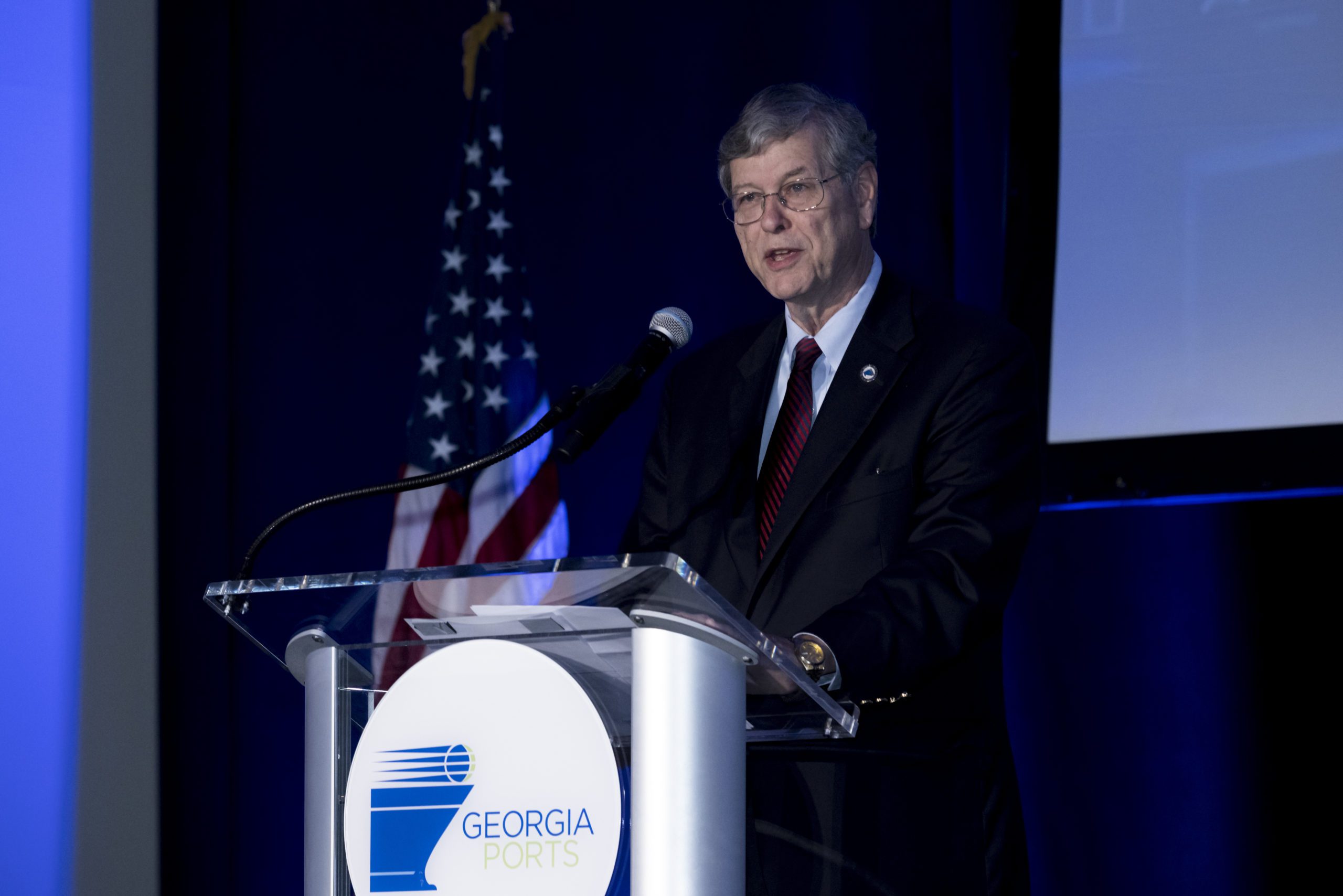Over the next 12 years, the GPA plans to spend $4.5 billion on infrastructure improvements. What will the expansion plans mean for port customers in Savannah and Brunswick? How will they benefit our local communities and state?
Our infrastructure investments will help Georgia Ports take on additional cargo without suffering congestion at our container or breakbulk terminals. For customers, it means GPA will remain a reliable supply chain partner as they grow their own enterprises. This will enable GPA to expand its business, protect the more than 560,000 jobs across the state that rely on port trade, and support new job opportunities for Georgians across agriculture, manufacturing, retail and logistics.
Local governments will benefit from an expanding tax digest as major employers and their suppliers locate in communities across the Peach State.
Presently, Savannah is the nation’s third busiest gateway for container trade, after LA-Long Beach and New York-New Jersey. In light of the aggressive growth plan the Board has put into motion, what role do you see Savannah playing in the national economy 10 years from now?
Each year, more customers discover the ease of doing business through Savannah, the reliability of our services and our deep reach into important inland markets. The most recent PIERS data show that Savannah accounts for 11.4 percent of the nation’s loaded container trade and growing. We anticipate the trend in which Georgia has been gaining market share to continue, with additional cargo owners relying on Savannah to serve inland destinations across the Southeast and beyond, including markets such as Dallas and Chicago.
Hyundai’s announcement of its new electric vehicle plant in Bryan County helps solidify Georgia as a center for auto manufacturing. How are Georgia’s deepwater terminals in Savannah and Brunswick supporting the industry’s operation and growth in the state?
Kia Motors Manufacturing Georgia has served as a great model for automakers who are considering our state. Easy connections via road and rail to our terminals mean manufacturing components flow through our container port in Savannah, while finished vehicles can be exported to global destinations through the Port of Brunswick.
Georgia truly offers a superior package of available land, a pro-business environment, and a logistics network that supports both the production and sales sides of the automaking industry.
Hyundai’s electric vehicle plant will hire approximately 8,000 people. How do you think this and other major announcements over the past year will impact the available labor pool in Coastal Georgia?
Employers across the country have experienced challenges in filling open positions, as evidenced by the nation’s low unemployment rate. However, recent announcements in Georgia will provide opportunities not only for coastal residents, but for rural communities to the west as well.
Additionally, spouses and children will accompany many of the new employees who must move to the area. These new Georgians will boost the labor pool and help to offset the impact of new labor demand.
According to the most recent figures from Colliers International, the Savannah market has added 15.7 million square feet of industrial space over the past year, and now stands at approximately 100 million square feet. However, the vacancy rate remains less than 1 percent. Why is the Savannah market so hot? What makes Savannah a must-serve port in terms of national and global logistics?
We often point out that Savannah is the most westerly major container port on the U.S. East Coast. We’re 100 miles closer to Atlanta than any other U.S. port, for instance. Similarly, the Port of Brunswick offers convenient proximity to dealerships and manufacturers across the Southeast.
In the container trade, Savannah occupies an enviable position, offering the most global vessel services in the South Atlantic and Gulf Coasts; on-terminal rail and direct access to Interstates 95 and 16. Some 44 percent of the U.S. population is within two days’ drive of Savannah.
So, Georgia offers superior connectivity to the nation’s most populous regions, containers depart our terminal in hours or days – not weeks, and Savannah provides a dependable alternative to customers frustrated by West Coast congestion.
Georgia has been ranked the best state in which to do business for nine consecutive years. What is the secret to Georgia’s success? How has this ranking affected GPA’s ability to win new business?
Our state offers a business-friendly environment, a population that’s ready to work, a thriving ecosystem across multiple industry sectors, and unmatched logistics assets.
Another major benefit is the cooperation between local and state leaders. Potential employers appreciate the cooperation evident at every level.
GPA works with the Georgia Department of Economic Development and local development authorities across the state to help recruit new business, and the reputation our state has earned definitely aids that process.
Manufacturing output is shifting among Asian nations. What is the GPA’s outlook on global trade as these moves increase in the coming years?
As manufacturers choose a China +1 model – adding factories in India or Vietnam, for instance – more overseas production moves south and west. The ocean route of choice then becomes the Suez Canal through the Mediterranean and across the Atlantic. Growth on this trade lane will help Savannah and the U.S. East Coast increase its market share in the global container trade.
Once cargo arrives on shore, a key growth factor is the port’s ability to move freight efficiently to inland markets. How are GPA’s rail capacity improvements working to support future freight growth?
By expanding our annual rail capacity to a million lifts per year, our Mason Mega Rail project supports the efficient transition of cargo from the West Coast to Savannah.
Customers can now choose GPA to serve East Coast population centers, as well as inland markets that can be reached on rail routes half the distance of those from the West Coast.
